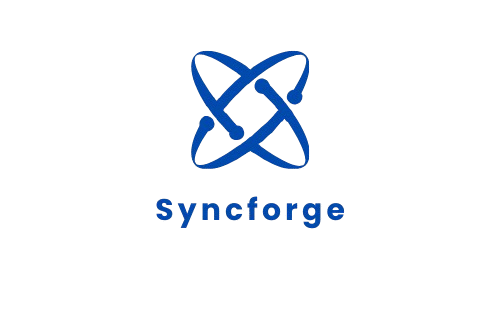Guide to SaaS Vendor Management: Simplify Contracts, Compliance & Control

You know your business can benefit from plenty of software applications these days. If you are using some of these applications in your organization, you need to adopt a SaaS vendor management strategy.
The concept of SaaS vendor management is growing in popularity due to the expanding cloud-based software applications. These tools are available in a wide variety to make your life easier.
However, these tools, if not managed properly, can complicate your life as well. You need a proper SaaS vendor management strategy to manage all your subscriptions, SaaS spend and usage. So, without further ado, let’s enter the world of SaaS vendor management.
What is meant by SaaS Vendor Management?
SaaS vendor management is a process in which you manage vendor and supplier relationships. You go on searching for the best business solution to a problem and then pass it out across your organization. An effective SaaS vendor management leads to reduced risk, optimized SaaS spend and better vendor relationships.
SaaS vendor management gives us full control of our business’s technology stack and allows us to make smart software decisions. It helps teams to monitor app usage and vendor performance, diminish redundant tools and significantly reduce SaaS costs.
Lifecycle of SaaS Vendor Management
The process of vendor management consists of several stages, from vendor selection to price negotiation till closure of the agreement. Let’s have a look at all these stages of vendor management below.
1. Selection of an appropriate vendor
The first step is to select an appropriate vendor according to your business needs and trust them with your product and business security. Vendor selection is a comprehensive process which includes research, pricing, competitor comparison and so on. Some companies also demand quotes and requests for proposals when selecting a vendor.
2. Price negotiation
After selecting the vendor, your next important stage is price negotiation. You can hire an expert for this purpose, as it is a very serious matter. They can guide you through the ins and outs of the negotiation process and can get you the best deal for your SaaS company.
3. Contract Signing
After price negotiation, it’s time for both parties to sign the contracts. These contracts include the terms and conditions under which the companies can use and access the software. The contract terms should be fair and mutually beneficial to ensure a long-lasting vendor relationship.
4. Onboarding of Vendors
This stage will help your business prevent overspending and ensure proper visibility of your SaaS stack. At this stage, vendors get to know about the company’s processes and performance expectations.
5. Relationship Management
Now you have to keep your relationship with the vendor by communicating regularly to make it strong and long-lasting. SaaS purchases have to be checked regularly to ensure the vendor’s performance and compliance standards.
6. Payment Management
A SaaS vendor management system makes sure that the payments for all company software are on time. The subscriptions in SaaS management are mostly set to auto-renewal. This way, you can miss out on a lot of benefits. A proactive renewal strategy is the best way to manage invoicing and payments of your SaaS providers.
Contract Closure
This step has to be done very carefully because here you have to remove SaaS vendors from the financial and administrative records of your company. You should always terminate the contract officially, filling out all the offboarding formalities.
Reasons Why You Need SaaS Vendor Management
SaaS vendor management is required for protecting data and keeping operations scalable. If you don’t have a proper SaaS vendor manage system in place, you may face shadow IT, missed renewals and contract waste.
The following are the reasons showing that you always need SaaS vendor manage for your company.
- Lack of transparency for all technology purchases in a company.
- Increased SaaS spend leads to an increase in security risk. This risk can be mitigated by an adequate SaaS vendor management system.
- It leads to reduced redundant functionality across applications.
- A SaaS vendor manage system makes it easier to see upcoming renewals from least to most expensive.
- It will decrease the operational burden on your company by removing the unused applications.
Best practices for SaaS vendor Management
Finance and procurement leaders face big challenges in vendor management. The rest of the company is actually relying on them to handle and develop vendor relationships in an effective way. The entire vendor management journey has been, in most cases, digitized to the point where there is no physical interaction.
A lot of finance teams have not been able to maintain a consistent and compliant vendor management process or have had a system, hence it has been very hard for them to choose, negotiate with, manage, and pay both traditional and SaaS vendors.
Below are some vendor management best practices that make the experience better for everyone and facilitate your team’s work.
- You should have a centralized system of record. Generate a single line to track all SaaS apps, renewals, contracts and license counts.
- You must assign clear app ownership to someone who is responsible for managing access and reviewing usage.
- There should be a regular audit of usage and licenses to review login data and license utilization every quarter.
- You should have an automated system for tracking renewals at least 60-90 days before the contract ends.
- There should be proper negotiation when dealing with your service providers so that you can secure discounts or switch providers, in case of low value.
- Consolidate tools that overlap to ensure easier onboarding and fewer logins.
- SLA Compliance and data security must be ensured because you are not just buying the features, rather putting your trust into the vendor.
Top SaaS Vendor Management Tools

The following are some of the tools that are mostly used for SaaS vendor management.
1. CloudEagle.ai:
CloudEagle.ai is an all-in-one SaaS management and procurement platform that handles the vendor-related tasks, such as SaaS spend management and contract management. It provides the following features :
- Centralized Dashboard
- Vendor research
- Outsourced Procurement
- Renewal management
- Contract management
- Complete SaaS visibility
- Automated onboarding and offboarding
2. Productiv
Productiv is essentially a SaaS intelligence platform that is aimed at not only making the SaaS tools and vendors’ expenditure more efficient but also at increasing the overall SaaS efficiency. One of its notable features is an extensive discovery mechanism that, essentially, collects all the important vendor data from various sources and brings them together in a single place. It also offers:
- Data-driven insights to leverage SaaS usage.
- Automated renewal and contract management process.
3. LeanIX
LeanIX provides the necessary instruments for you to keep track of your vendor usage, manage contracts, and create insights for the best use of the investment. It offers:
- SaaS portfolio management
- Seamless data flow across your organization.
- Real-time data to support IT transformation efforts
4. Vendr
Vendr handles the entire vendor lifecycle, from requests to workflows and maintenance. It improves supplier relationships by encouraging open communication and aligning goals. It offers:
- Optimized SaaS procurement.
- Manage renewals and negotiations.
5. Zylo
Zylo helps you get visibility into all your SaaS applications and vendors, even those not managed by IT. With frictionless monitoring from Zylo, you can see all your vendors in one place, along with usage, spending, and contract details. It offers:
- Comprehensive SaaS management
- Detailed cost tracking and analytics
- Help in vendor making
Key Features of SaaS Vendor Management Tools
The following are some of the features that you should look for in a SaaS vendor management tool.
- Vendor onboarding automation.
- Risk and performance monitoring
- Contract and renewal management system
- Reporting and spend analytics to be aware of the trends across departments.
- Integration and scalability with tools such as ERP, procurement and finance platforms.
- Built-in communication tools
- Proper vendor offboarding system with compliance checks.
Risks of not using Saas Vendor Management Tools
Not using vendor management tools might look like something with no significant consequences at the beginning, especially if your SaaS stack is limited. But the lack of a well-organized system as your company grows exposes you to various risks.
These are the problems that you will encounter:
- Contract Overlaps and Wasted Spend: In the absence of centralized visibility, one may unknowingly pay for duplicate tools or licenses that are not used. Most of the time, renewals are executed automatically, and you might keep financing those tools that your teams no longer utilize without realizing it.
- Shadow IT and Security Gaps: Employee use of tools without the knowledge of the IT department means that you have less control over data access and compliance. This leads to a fragmented setting where risk assessments are either very limited or not there at all.
- Manual Errors and Missed Deadlines: The use of spreadsheets or scattered documentation for tracking purposes increases the likelihood of mistakes in recording contract terms, renewal dates, or pricing tiers, which in turn leads to missing out on savings or sudden interruptions of services.
- Lack of Negotiation Leverage: When you can’t monitor usage or quantify the value, you are not prepared for renewal discussions. Vendors may continue to charge you at a premium rate while they offer you less and less.
How to choose the best SaaS vendor management tool?
Selecting the proper IT vendor management tool should be done after figuring out the internal challenges in your organization such as if it is tracking renewals, managing contracts, or monitoring vendor performance.
Next, you would assess products on the grounds of features, scalability, integrations, price, and support. First of all, you should identify your needs, define goals and consider the size and complexity of your SaaS vendor ecosystem.
Then, evaluate the core features of your system mentioned above in the article. Prefer a cloud-based vendor management system for scalability and remote access. Then, review all the upfront and hidden costs, enquire about onboarding and customer support. Always request a demo or trial before signing off on a contract with a vendor.
Key Challenges in Managing SaaS Applications
Operating SaaS applications involves a number of difficulties. The biggest problem is the handling of several vendors and different contracts. Such complexity can result in fragmented management and a lack of proper control.
Besides that, cost control and shadow IT are other challenges. If SaaS applications are not carefully monitored, they can very quickly cause IT budgets to double. Thus, it is necessary to keep watch all the time and manage spending strategically with centralized intake process.
Security and compliance are also alarm areas. It is very important that SaaS applications meet the needs of the organization and those of the industry. IT Managers should always be aware of compliance requirements and make sure that vendors follow them.
It takes a well-thought-out plan and proficient management to sort out these issues. By confronting such problems directly, IT Managers will be able to make sure that SaaS applications are a great asset to the company.
Strategies for Effective SaaS Vendor Selection
Selecting appropriate SaaS vendors is the main factor in the achievement of business goals. With a strategic approach, it is ensured that the vendors are in line with the goals of the organization and deliver the expected results.
First of all, you should judge the vendor’s trustworthiness and support base in the industry. This involves looking for positive customer testimonials and industry rankings. Generally, a trustworthy vendor is one who provides services that are both efficient and stable.
Afterwards, it is advisable to determine a potential seller’s adaptability as well as their capability to meet a growing demand. Basically, their ability to extend usage and services offers the business you are using quite valuable potential. For the foreseeable future, selecting vendors who give options that are easily adjustable to different needs will adequately solve the problem of your business.
Moreover, a thorough check on the total cost of ownership should be part of the strategy for vendor selection. You must understand the costs of the solutions that your vendor offers, and in that, there are no hidden fees. It ensures that the used financial resources are at their optimal level.
Here is a checklist that might be helpful in vendor selection:
- Vendor reputation and experience
- Scalability and flexibility of solutions
- Total cost of ownership
- Customer support and service levels
- Security and compliance standards
If you stick to these criteria, it will be easier to choose SaaS vendors who are of great help in the long run. Additionally, it ensures a strategic fit with the company’s broader IT strategy and business goals.
The future of SaaS Vendor Management
The SaaS environment is like a wave which is always changing. Thus, it is necessary to change the way we handle SaaS as well. IT managers are obliged to be aware of the changes in order to catch up with them.
Automation and AI are hard to separate from one another, as well as from SaaS management in the near future. These devices are capable of opening up optimization opportunities by cutting down the manual efforts. Therefore, seeing that they are used properly can be a great operational efficiency win.
Another trend with a significant impact on SaaS is the rise of hybrid work models. Remote as well as on-site work connected to good practices cannot be supported unless SaaS solutions adapt. It means that applications have to extend each other in different environments without causing any inconvenience.
In the future, SaaS management will be dominated by concerns about sustainability and efficiency. Since businesses have become more environmentally aware of the impact of their activities, eco-friendly practices in SaaS management will be the norm. Such an adjustment is expected to affect the selection of vendors and the strategies used in the management process.
Conclusion
Managing SaaS vendors has become indispensable in the corporate world of today. Due to enhanced SaaS applications usage in different organizations, handling vendors effectively is a sure way of keeping expenses under control, contributing to security, compliance, and better ROI.
An elaborated SaaS vendor management plan equips enterprises with an overview of their tech stack, eliminates the possibility of spending unnecessarily and encourages positive, long-term vendor relationships.
Once the trends of automation, AI, and hybrid work are still developing, the use of up-to-date SaaS vendor management solutions will determine who will be able to stay in the game. Through the implementation of best practices, keeping transparency, and using the right tools, companies can be sure that their SaaS environment is a source of growth, productivity, and innovation.
Why not seize the power over your SaaS stack?
Through a thorough SaaS vendor management platform, you can start today with optimizing how you spend on software and vendor relationships.
Faqs:
1. How often should a firm look over its cloud software vendor contracts?
Normally, a company should at least once or twice a year check over its vendor contracts to determine if the contract is being used as agreed, if there are any price changes or renewal terms. It is through these periodic audits that the company can find out if there are any tools that they have paid for but underutilized or even redundant.
2. Is it possible that small businesses gain from SaaS vendor management units as well?
Yes, even a small business is bound to have various SaaS tools for various branches of the business like accounting, marketing, or HR. Vendor management in this case will help them keep track of their money as well as maintain the view as they grow.
3. What kind of data should be collected for SaaS vendor management?
The main points include: How much a software is used (utilization rate), when the agreement ends (renewal dates), how well the vendor performs, how much one user costs, and what is the tool’s ROI.
4. How does going through a SaaS vendor management system affect cybersecurity?
Among other things, it empowers cybersecurity measures by making sure that only approved and compliant software is used, hence lessening the chances of shadow IT and unauthorized apps.
5. What is the significance of automation in vendor management?
Automation takes care of all the activities related to the renewal of contracts such as renewal tracking, usage monitoring, invoice management, and alert sending, thus saving the time which would otherwise be spent on manual activities and also reducing human errors while executing the tasks.




